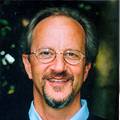David Ropeik
Speaker

David Ropeik is an author, consultant, and speaker on risk perception and risk communication to governments, businesses, trade associations, health care organizations, consumer groups, and educational institutions worldwide.
He is an Instructor in the Harvard University Extension School's Environmental Management Program and author of How Risky Is It, Really? Why Our Fears Don’t Always Match the Facts, published in 2010, as well as the co-author of RISK, A Practical Guide for Deciding What’s Dangerous and What’s Safe in the World Around You, published in 2002.
Mr. Ropeik is creator and director of the program Improving Media Coverage of Risk, a training programme for journalists. At BigThink.com he writes the Risk: Reason and Reality blog, at Psychology Today the How Risky Is It Really?-blog, and is a contributing blogger at different reputable newspapers.
He was an Instructor at the Harvard School of Public Health and co-director of the school’s professional education course The Risk Communication Challenge. For 22 years Mr. Ropeik worked as a television news reporter in Boston, specializing in coverage of environmental and science issues.
He has taught courses on media coverage of risk issues at the Harvard School of Public Health, the Knight Science Journalism Fellowship program at MIT and many other distinguished institutions.
Mr. Ropeik is a judge for the Oakes Environmental Journalism Award program and a screening judge for the DuPont Columbia Awards for Broadcast Journalism.
Prior to joining Harvard, Mr. Ropeik was a daily news reporter for WCVB-TV, Channel 5, in Boston for 22 years. He specialized in reporting on environment and science issues. He twice won the DuPont-Columbia Award and also won a national Gabriel Award, a National Headliners Award (including a “Best of Show” additional honor), and seven regional EMMY awards.
Between 1998 and 2000 he authored the science column How and Why in The Boston Globe, syndicated by The New York Times.
He has Bachelor’s Degree (’72) and Master’s Degree (’73) in Journalism from Northwestern University’s Medill School of Journalism. Mr. Ropeik was a Knight Science Journalism Fellow at MIT, 1994 to 95, and a National Tropical Botanical Garden Fellow in 1999. From 1991 to 2000 he was a member of the board of directors of the Society of Environmental Journalists. He has taught journalism at Boston University, Tufts University, and MIT.
ZAK asked David Ropeik to answer the following questions:
1. Has our need for security grown or merely our perception of insecurity?
In many ways, of course, we are far safer than we have been. Our food and water are safer and their supply is more certain. Working conditions have improved. Over time humans have become less violent towards one another (with many glaring exceptions, of course). Our health and safety have been vastly improved by incredible advances in medicine and health care. Consider that we are living far longer, nearly twice as long as we lived just 100 years ago.
However, modern advances have created new risks; from overuse of antibiotics, the global spread of diseases via international travel and trade, chemical pollution, the stress of billions of people crowding into cities and competing for space and jobs and resources. And never have humans faced so many demanding challenges from the finite physical system.
Unsustainability poses monstrous new risks of all sorts, from climate change to ocean acidification to deforestation and desertification.
Beyond their physical dangers, these modern risks pose hidden hazards because they are more complex than the simple threats we evolved to recognize. Our risk perception system depends more on feelings and instincts than reason and the facts. It does not do as good a job carefully and rationally figuring out threats like climate change or nuclear power. In short, our risk perception system, which relies so heavily on subjective emotional characteristics, sometimes makes mistakes with complex modern risks, and our fears do not match the facts, and that – what I call in my book “The Risk Perception Gap” – creates additional dangers all by itself.
Further, our new media age makes information far more readily and quickly available than ever before, and in the competitive market for our attention, media providers emphasise the alarming or frightening aspects of life, greatly magnifying our fears.
So physically we are safer from what used to be the biggest threats, more at risk from some new ones, and certainly quite worried. But emotionally, I would guess that, as important as survival is, people have always been quite sensitive to the dangers around them, and have always worried about having more emotional security, more of a feeling of safety.
Our need just seems so great to us because we are more aware of what frightens us than what may have frightened others before us.
2. To what extent are interferences between the different risks on the increase? Is a domino effect recognisable?
The unprecedented interconnectedness of the modern global community creates many new vulnerabilities of its own. Vital infrastructures are woven together such that if one experiences problems it quickly ripples out the many others (consider the dangerous interconnectedness of systems like electricity, communications, banking and finance). Populations are more mutually reliant, more in contact. Many separate parts of some systems, such as banking/finance, are intimately tied to each other and vulnerable to troubles anywhere.
In addition, some risks give rise to other risks, and this is far more widespread in an interconnected global community. We reduced the risk of starvation by modifying wheat and bananas and rice, but becoming so reliant on these few crops we have made ourselves terribly vulnerable should any one of them be threatened by an emergent disease (as is currently the case with wheat and bananas.) And of course the global population of 7 billion sets processes in motion that create new risks, and then new risks as as result of the first ones.

